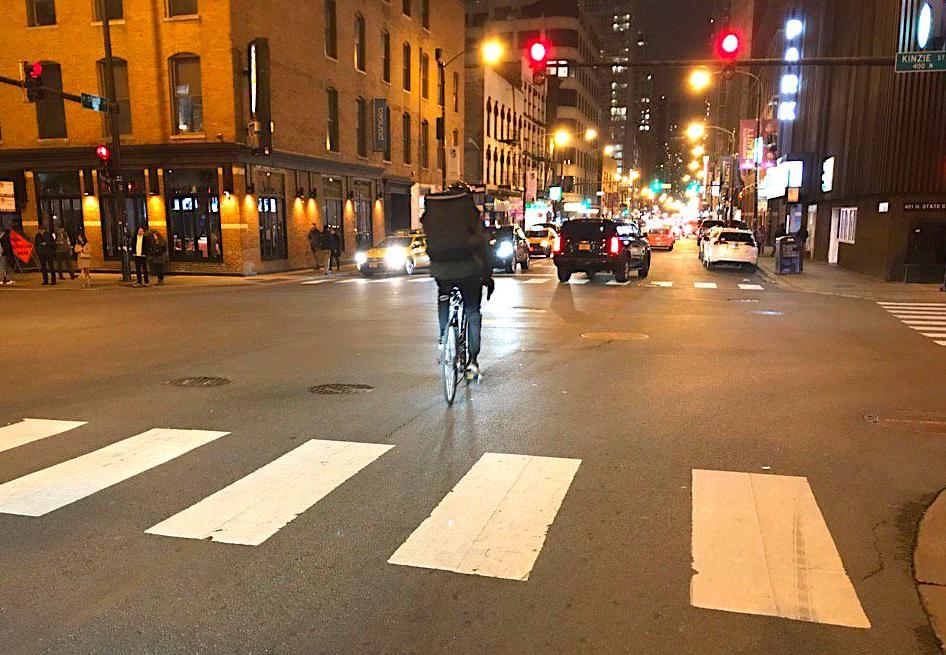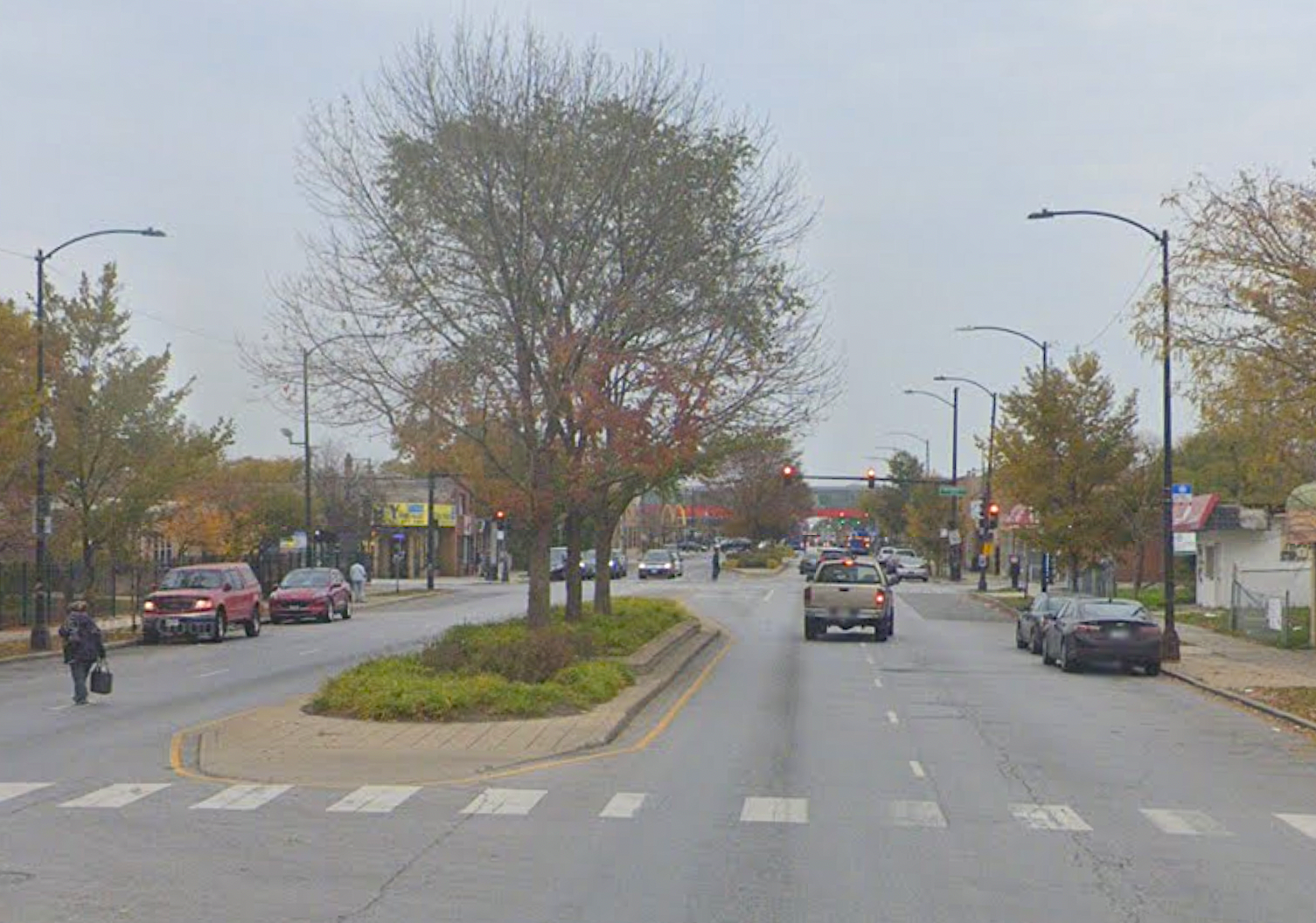[A version of this article previously ran in the Chicago Reader.]
I’ve been fielding a lot of complaints about lawbreaking cyclists since my last Reader column on the mayoral election. It mentioned Toni Preckwinkle’s statement during a recent debate that many local bike riders “don't pay any attention to the traffic laws, which is not only infuriating, but also scary for drivers."
Recently a Twitter user griped to me about bicyclists “careening recklessly down Diversey or Belmont.”
Another grumbled that “Many many [cyclists] ARE unsafe. Very self-centered, all-about-me-me-me and generally disrespectful." (Isn’t it great that motorists never act that way?)
“Some bike riders make me nuts,” tweeted a third person. “As a cane-dependent senior, it’s unnerving when a bike rider sees you step off the curb and shoots in front of you as though you’re invisible.”
Let me start out by noting that lawbreaking and/or unsafe cycling is a fairly trivial issue compared to reckless, intoxicated, and distracted driving. The danger posed to others by, say, 200 pounds of bike and rider going 15 mph is insignificant compared to two tons of motor vehicle doing 30 mph or more. I’ve found no record of anyone ever being fatally struck by a bike rider in Chicago, whereas drivers killed 132 people in our city in 2017.
That said, hazardous and obnoxious cycling is a thing. People on bikes have the potential to act like fools and jerks, just like any other kind of road user, even if they are exponentially less dangerous than their motoring counterparts. So I’d like to throw a bone to the “there a lot of reckless bikers” crowd with a look at Chicago should do about bicyclists who break traffic rules.
Let’s classify lawbreaking cyclists into three categories:
- Technically illegal, but widespread and relatively harmless, behavior. This includes slow, cautious riding for short distances on sidewalks, or against traffic on side streets. Another example is the “Idaho stop”: Cyclists treating stoplights like stop signs, and stop signs like yield signs, so called because it’s legal in the Gem State. Utah recently considered legalizing it, and Arkansas just did.
- Lawbreaking that may be annoying or scary for others, but is mostly a danger to the cyclist. This includes riding for long distances on sidewalks or against traffic on main streets, and riding at night without lights. (People who do the latter are nicknamed “bike ninjas.”) These behaviors may be due to fear of sharing the road with drivers; the mistaken belief that riding into oncoming traffic is safer; or lack of money to buy lights.
- Willfully inconsiderate or reckless riding that can terrify or endanger others. This includes hauling ass down crowded sidewalks; failing to yield to pedestrians in crosswalks (what the cane-using senior described); and mindlessly bombing red lights and stop signs in a way that forces drivers to hit the brakes to avoid a crash.
There’s a racial equity component to the question of what we should do about these behaviors. A 2017 Tribune investigation found that some communities of color saw exponentially more tickets for bike infractions than majority-white neighborhoods. A police rep eventually acknowledged that this was due to officers using bike enforcement as a pretext for searches in high-crime areas. And a Reader analysis of tickets for downtown sidewalk riding during last summer’s Divvy theft crisis found that about three times as many otherwise-innocent black cyclists were cited as their white counterparts.
To get some different viewpoints on the best policies to address lawbreaking by cyclists, I checked in with a few different city agencies and transportation experts and advocates.
I contacted the Wisconsin-based National Motorists Association for the hard-right windshield perspective, because their drivers-first stances against automated enforcement, lower speed limits, traffic calming, stricter DUI rules, and even seatbelt laws make the relatively moderate American Automobile Association look like Greenpeace. But I was pleasantly surprised by spokeswoman Shelia Dunn’s fairly balanced response, which stressed that everyone “driving, riding, or walking… should be responsible for their own safety and look out for others on the road.”
Predictably, the NMA doesn’t support legalizing the Idaho stop. Dunn argued that doing so would be difficult for pedestrians and drivers to predict bicyclists’ behavior, and people on bikes might feel empowered to run reds and signs even when the intersection isn’t clear.
Dunn stressed that better and earlier mobility education for kids, covering safe walking, biking, and driving practices, would go a long way towards preventing crashes. “I lived in Germany for a time, and my fourth grader was required to take a bicycling course in school,” she said. “This would be a tremendous help.”
I asked the Chicago Police Department about their enforcement policies towards the three types of lawbreaking. (We didn’t discuss the racial discrepancies, which I’ve written about at length.) But spokesman Howard Ludwig said officers are told to use discretion when writing tickets, differentiating between behavior that is merely unlawful and that which is truly hazardous. For example, he said, a hard-to-see bike ninja on a dark street might get a ticket, but “a cyclists without a light at night in a well-lit, commercial area might pedal away with simply a warning.”
This latitude is likely a factor in why officers often choose to ignore Idaho stops and other non-dangerous behavior. But Ludwig added that the CPD will sometimes conduct “targeted enforcement” stings of bike riders, staking out particular locations where residents or aldermen have complained about bike infractions, or in response to a cyclist-involved crash.
While the CPD’s job is wielding the proverbial “stick” of enforcement against hazardous behavior, the Chicago Department of Transportation provides “carrots” to promote safe cycling in the form of bike infrastructure, education, and encouragement. CDOT has built dozens of miles of physically protected bike lanes over the last eight years, which help make less-confident cyclists feel more comfortable staying off the sidewalk.
The department has also pioneered the use of contraflow bike lanes that legalize “wrong-way” riding on one-way stretches of traffic-calmed side-street routes called “neighborhood greenways.” This has made popular low-stress routes like Glenwood, Berteau, and Wood even better.
In addition, CDOT has installed dedicated bike stoplights on popular routes, sometimes giving cyclists a head-start before drivers get a green. The department credited the bike signals on downtown’s Dearborn protected lane with increasing stoplight compliance by a whopping 161 percent.
Meanwhile, CDOT Bicycling and Safe Routes Ambassadors safety outreach team pedals schools, day camps, senior centers, and community events to spread the gospel. The ambassadors attended 515 events and directly educated more than 75,000 people in 2018, according to department spokesman Mike Claffey.
DePaul University transportation expert Joe Schwieterman co-authored a 2016 study on the Idaho stop that found that two-thirds of Chicago cyclists proceeded through stoplights if there’s no cross traffic, and only one out of 25 riders comes to a complete stop at stop signs. The researchers endorsed legalizing the Idaho stop here, although they feel more study is needed.
Schwieterman also recommended allowing bicyclists who are stopped by police for other kinds of infractions take an online bike safety class as an alternative to paying a fine. “It would send a clear message about safety while lessening tension with law enforcement personnel.” It would also mitigate the regressive nature of bike tickets, typically $50 in Chicago, which have been concentrated in low-income neighborhoods.
Active Transportation Alliance advocacy director Jim Merrell stressed that traffic enforcement should target the most dangerous behaviors that data indicate lead to serious crashes and fatalities. “Far and away that behavior is among drivers, especially speeding, distracted and drunk driving, and failure to stop for people walking.”
As for policies towards lawbreaking cycling, Merrell said Active Trans has endorsed legalizing the Idaho Stop for years, although they’ve opted not to focus their resources on actively lobbying for it in favor or other priorities like bike lanes and Divvy expansion. He added that in some cities where legalization has been proposed, like San Francisco, “it’s galvanized opposition against biking.”
Merrell argued that sidewalk biking “is almost always an indication that a person on a bike does not feel safe or comfortable riding in the street,” which should be addressed with more protected lanes, neighborhood greenways, and off-street trails. Free bike light giveaways, which have been done in past by the Bike Ambassadors, and Streetsblog Chicago cofounder Steven Vance’s grassroots “Get Lit!” campaign.
As for Class 3 scofflaws, Merrell doesn’t have a problem with police cracking down on cycling behavior that endangers other people, especially pedestrians. “But it is unclear that this behavior, while annoying and disrespectful, presents a [significant] public safety risk. Reckless behavior among drivers is far and away the greatest cause of serious injuries and fatalities on our roadways.”
Merrell added that as biking becomes a more mainstream transportation mode in Chicago, cultural norms will shift and help reinforce what is acceptable and safe behavior. “That’s why it’s important to build infrastructure for all ages and abilities, remove barriers to bike access, and provide the education and encouragement needed to get more people biking for everyday transportation.”
Indeed, a few years ago when I biked in European cycling capitals like Amsterdam, Copenhagen, and Berlin, places with universal bike education and seamless car-free cycling infrastructure, I was struck by how orderly and law-abiding the bike culture was. My impression was that, in these cities where bike lanes were totally safe and traffic rules were completely logical, if you didn’t comply you ran the risk of being perceived as a person with poor home training or, worse, an American.






